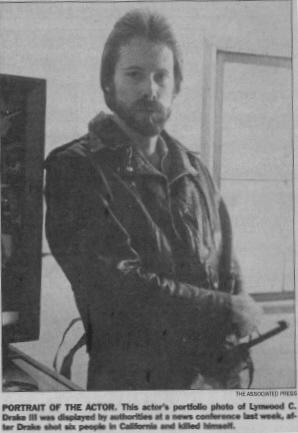In April of 2001 Carlos Runcie Tanaka, a Peruvian sculptor, happened to be in Richmond’s Fan District for a few days. In case you don't already know it, Tanaka was/is a star in the international art world. Let me tell you, after watching the sculptor fold and crease pieces of paper in a local bar, I’ve got two words of advice for Tanaka -- "show business."
Like so many tales, this one began with Happy Hour: The Baja Bean was a Fan District watering hole. It was located in the basement of what was originally a schoolhouse that looks like a stone and brick fortress. A typical crowd of mid-week regulars was assembled.
There were some 20 of them situated around the three-sided, horseshoe-shaped bar. The group was maybe equal parts white collar, blue color and no collar. When then-chairman of Virginia Commonwealth University’s sculpture department (the late) Joe Seipel came in the room, with Carlos Tanaka at his side, twinkly-eyed Joe was smiling more broadly than usual.
Seipel, who enjoyed telling a good story, also loved to present a cool visiting artist to his pals at Happy Hour. It was sort of a tradition left over from the Texas-Wisconsin Border Café (1982-99) -- a nearby eatery/saloon which Seipel once co-owned. Joe (who went on to become Dean of VCUarts) introduced Carlos to those of us in the room who hadn’t already met him.
In his career Tanaka has done much traveling, owing to his acclaim as an artist. At an art confab somewhere in South America he had met and gotten to know Seipel, plus a couple of other members of the art faculty at VCU’s world renown fine arts school. Then they arranged for Carlos to come to VCU as a visiting artist/scholar. That’s how a Peruvian artist ends up in The Bean at beer-thirty.
Note: One of Tanaka’s grandfathers was British and the other was Japanese. Both men married Peruvian women. In 1996 Carlos was among the hostages taken by the Tupac Amaru in a bizarre incident in Lima, Peru, at the Japanese ambassador’s home. Nonetheless, his horrific experience as the hostage of hell-bent terrorists for 50 days apparently had done little to diminish Tanaka's sense of humor.
Eventually, someone in the bar asked him about the crab-folding thing. Bingo! Someone else promptly supplied Carlos with a blank sheet of paper.
For the next 20 minutes the crab-folder told stories, made observations, ad-libbed and entertained everyone on hand. Nothing else was happening in the room for that spell. The product of the process was an intricate paper crab made from a single, ordinary piece of white bond paper.
Looking at the crab was fun; it almost seemed cute. For a crab.
But watching the artist fold the paper, over and over -- each fold exactly where it had to be -- as he served up his colorful patter, was a rare treat. Then, to the utter delight of the guy who had supplied him with the sheet of paper, the crab-folder/monologist gave it to him.
Applause!
Of course, someone else had to have one, too. Then another.
In that happy hour session Carlos folded four or five paper crabs. He never ran out of offbeat stories about drinking, playing practical jokes, making art, fools in high places, and so forth.
Note: The upbeat Carlos Tanaka never mentioned the dark time in which he was a hostage. I found out about that later.
The next time I saw Carlos in The Bean, a couple of days later, he gave me a paper crab as a souvenir (as shown above). Soon afterward he went back to Peru. As he’d been away from his studio for months, traveling and lecturing, he said he was glad to be going home. I haven’t seen him since, but we've kept in touch, via the Internet.
Occasionally, I have seen his name associated with a big art happening in South America, the USA or Europe. Nonetheless, whenever Carlos is ready to take a break from the sculpture gig, I still say a lucrative career in show biz as a crab-folding monologist awaits.
OK, I’ve probably already spent way too many of my personal allotment of hours in bars. So while it’s easy to say many of those hours were wasted, every now and then something genuinely unusual has happened, out of the blue, that has prompted me to say -- “I’m glad I was there.”
If nothing else, such times have provided fodder for a story to tell at a subsequent Happy Hour. Like our ancestors who also gathered in pubs, we listen to stories and sometimes we learn something worthwhile. All so we can recount the worthiest of those stories about what seemed remarkable, or funny, or at least somewhat unusual.
So, I've done my duty by telling this story. If you like, pass it on.
Note: To see a gallery of Carlos Tanaka's work click here.



